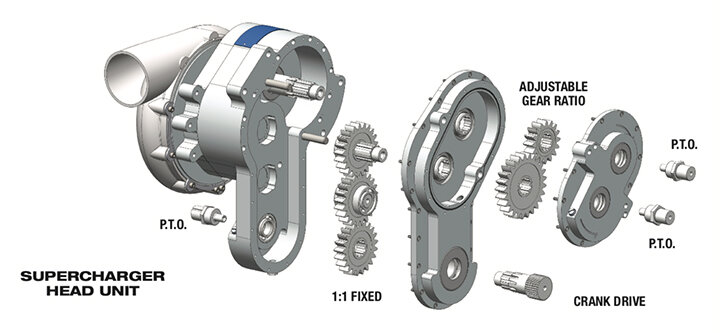How To: Front-Drive Blowers and the ProCharger CrankDrive™ Supercharger
July 2020 • By Tony Thacker, photos BigRed.com, mooneyesusa.com, Eric Sawyer, ProCharger.com, ProLineRacing.net & Tony ThackerIn 2018 ProCharger won the SEMA Show’s Best New Performance-Racing Product with their CrankDrive™ supercharger system that unlike most conventional belt-driven blowers is driven off the front of the crank. Intrigued with this modern take on an old concept TorqTalk dug a little deeper.
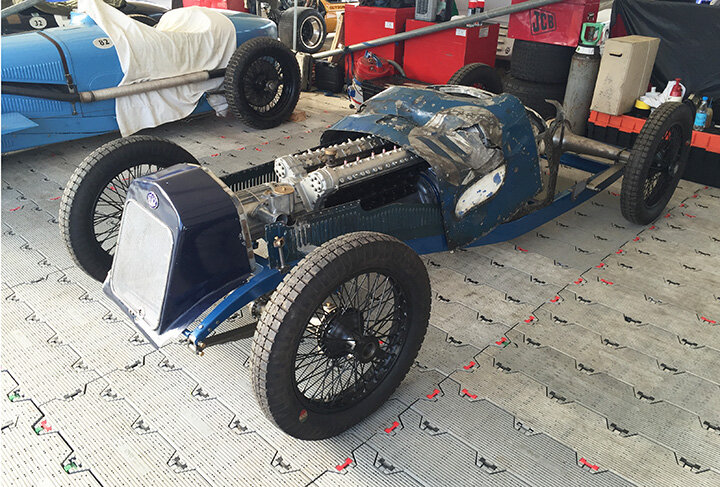
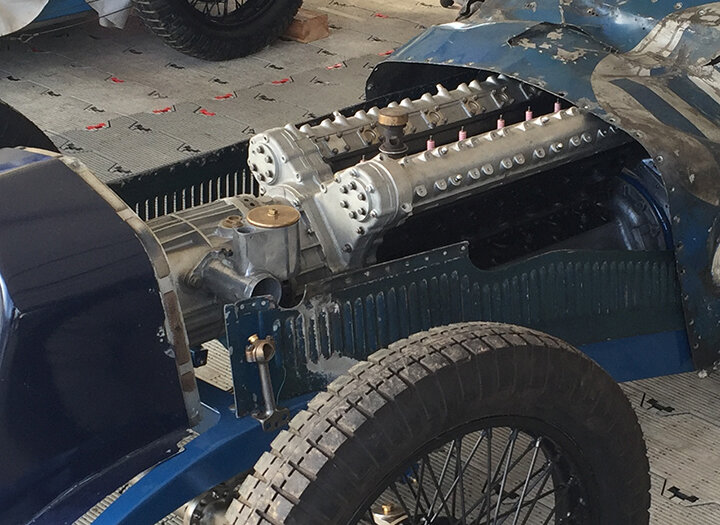

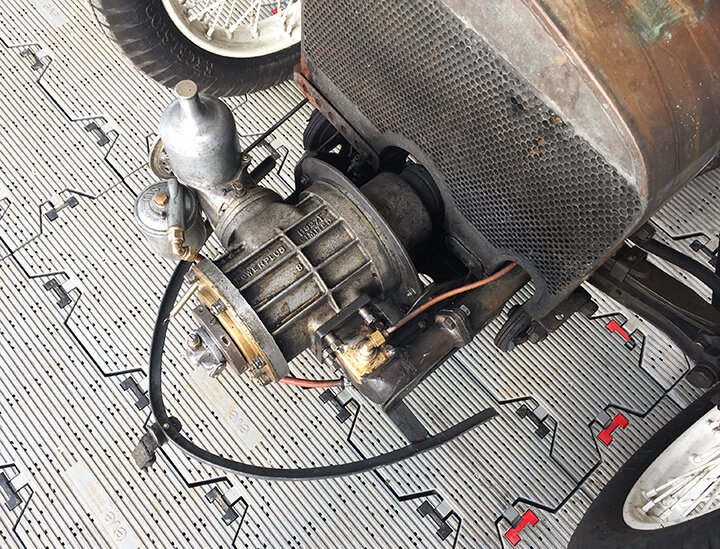

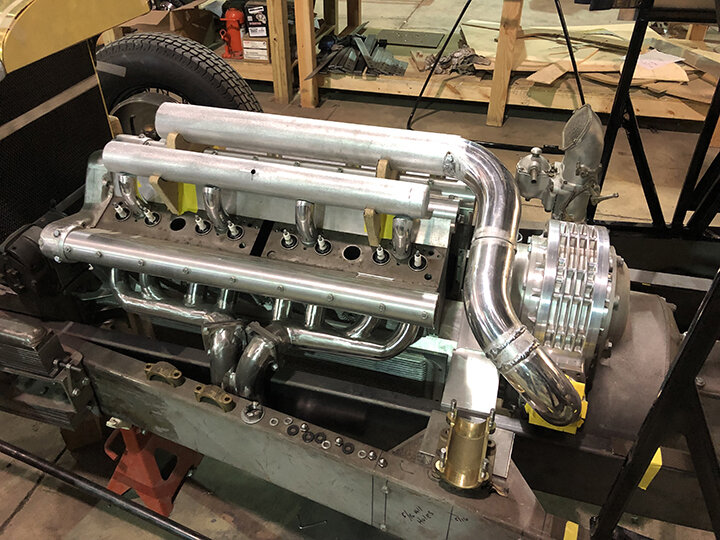
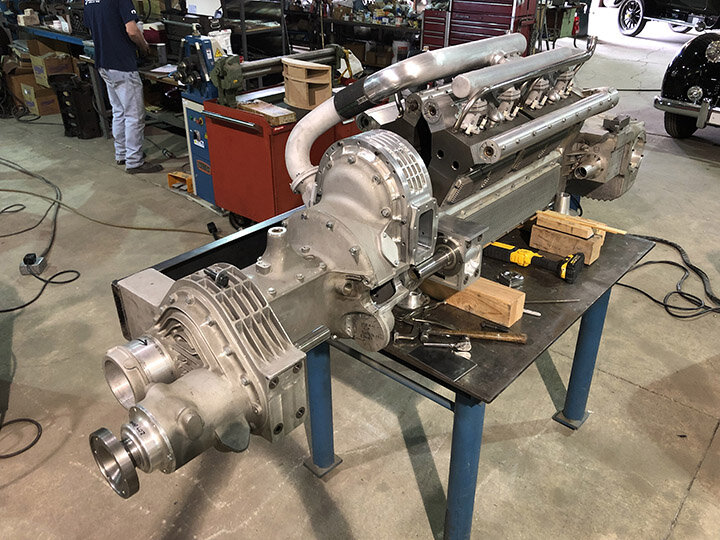
The first supercharged cars were introduced by Mercedes at the 1921 Berlin Motor Show. The blower was an epiphany and soon Alfa Romeo, Bugatti, Delage, Fiat, Sunbeam and Miller in the US were getting blown. And, towards the end of the twenties the distinctive ‘Blower Bentley’ appeared with its huge blower hanging out front like a phallus.
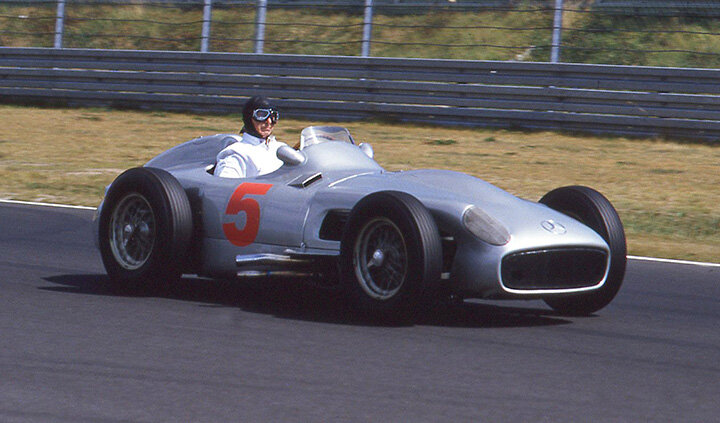

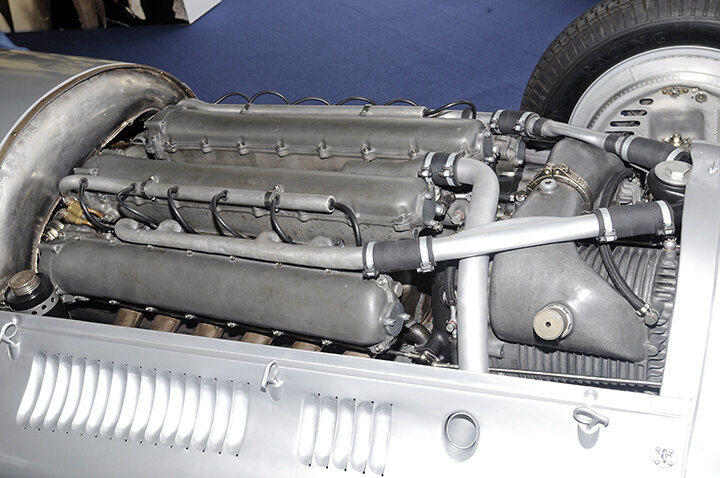
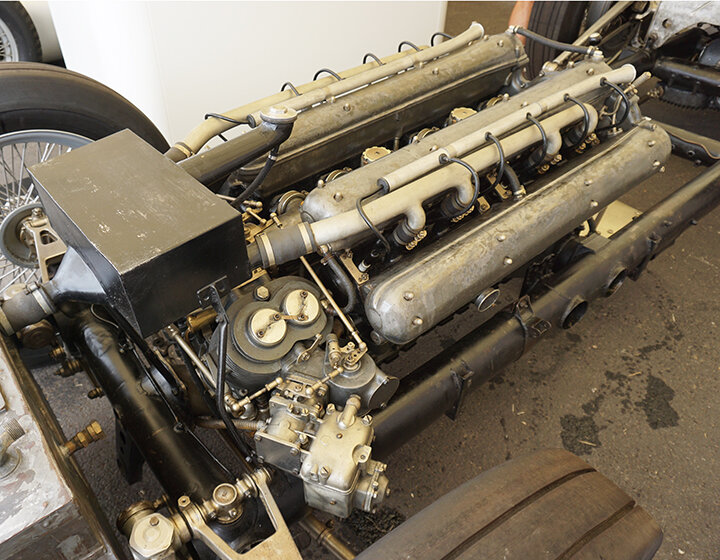
The glory days of front-mounted blowers came between 1934 and 1939 with the dominant Auto-Union and Mercedes Grand Prix cars. The pinnacle was reached with the 1939 Mercedes-Benz W154 that featured a two-stage supercharged 4-cam 60-degree 3.0L V-12 racing engine. The M163-type engine could produce up to 483-horsepower at an earsplitting 7,800 rpm.

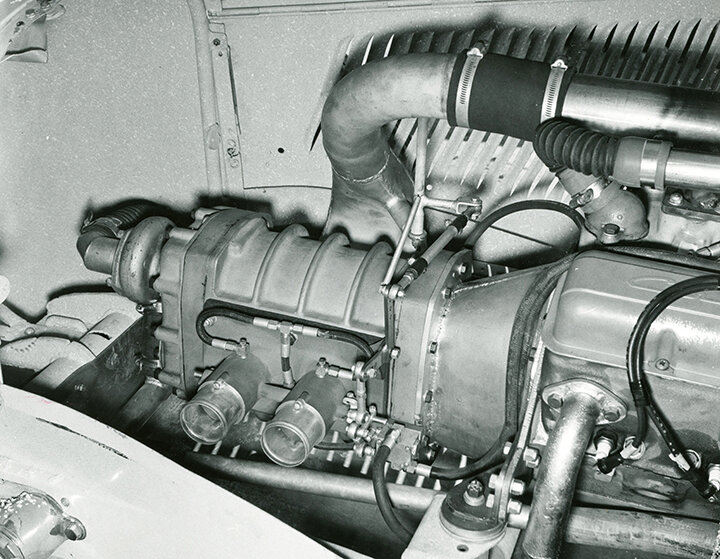
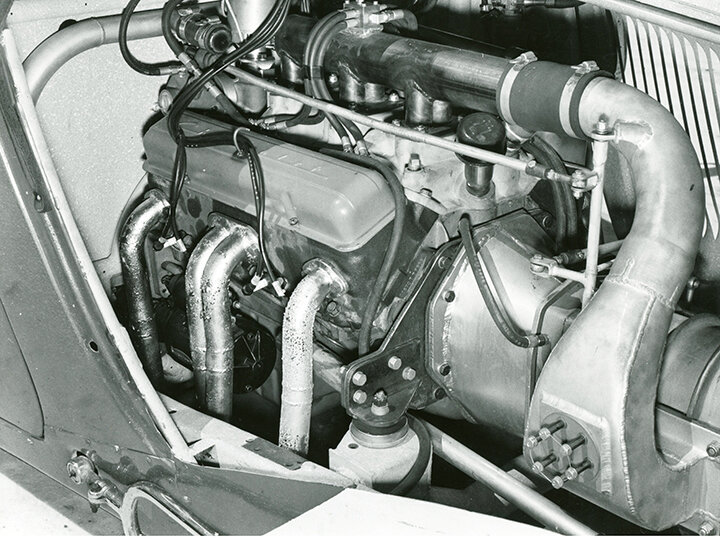
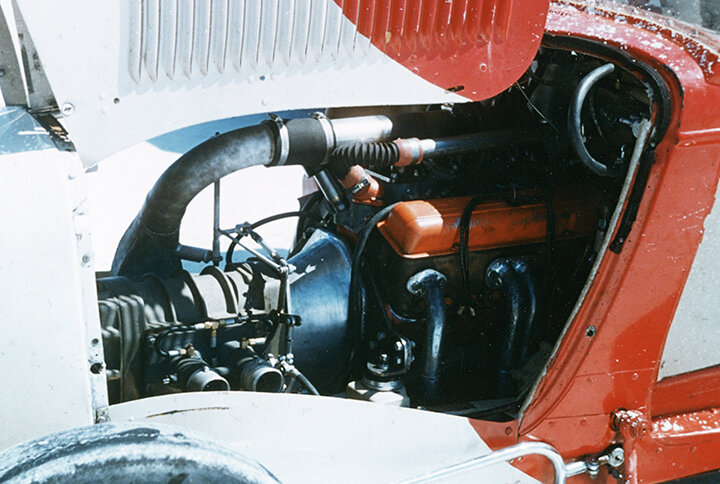
Let’s jump forward to the early fifties and the advent of US drag racing. Any and all means of increasing horsepower were tried from blowers to hydrazine. Drag racers had primarily settled on the GMC (Jimmy) Roots-type positive displacement blower belt driven and mounted on top of the engine. The problem with a top-mounted blower is that it’s difficult to see around. There’s also some parasitic loss caused by the wasted energy needed to drive the blower. Meanwhile, dry lakes racers Doug Hartelt and Chuck Potvin had been experimenting with front-mounted blowers directly driven from the crank that provided a positive drive, a lower center of gravity and better visibility. It made sense.
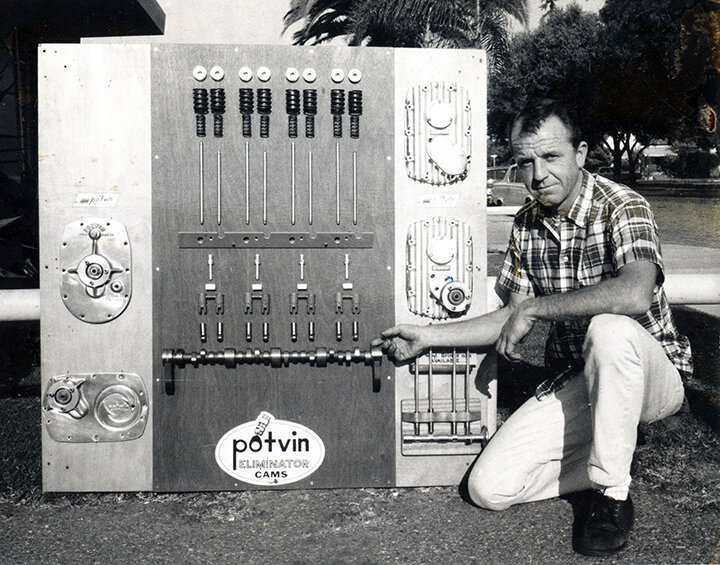

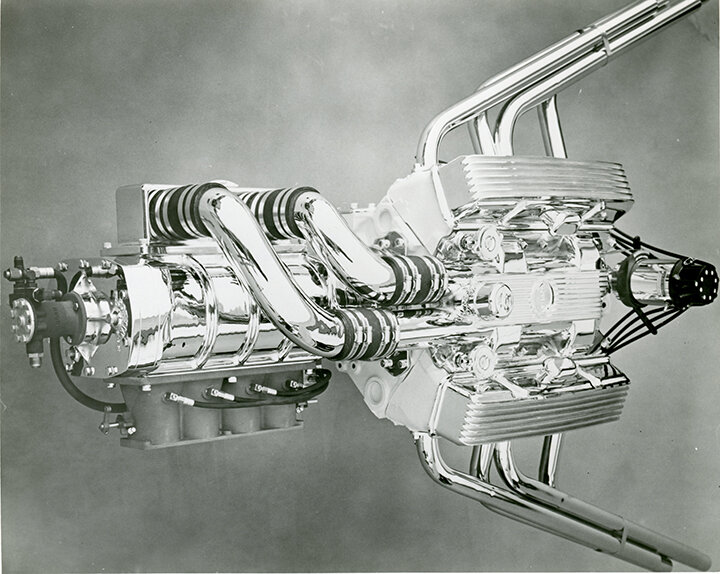
Potvin developed a good little business charging about $50 to build a racing blower. He was not a marketer, however, and in 1958 he made a deal with Dean Moon to become the distributor. In 1960, the Dragmaster Two-Thing sported a pair of Potvins mounted to a pair of Chevy V-8s. Running on pump gas it set a ¼-mile record at 171.10 mph.
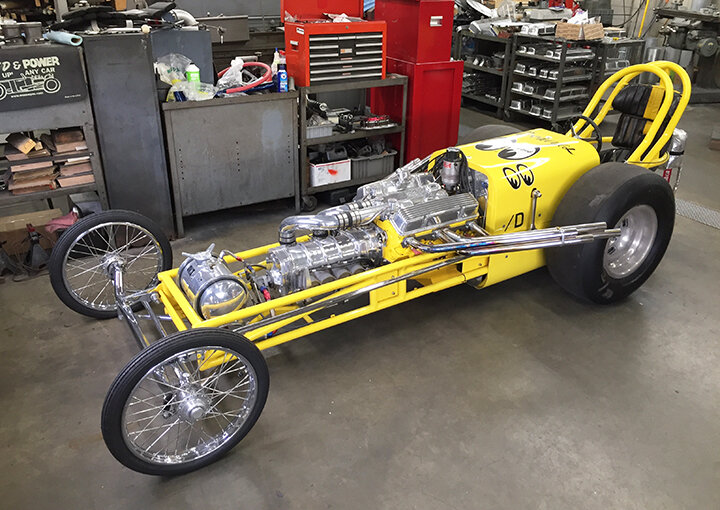
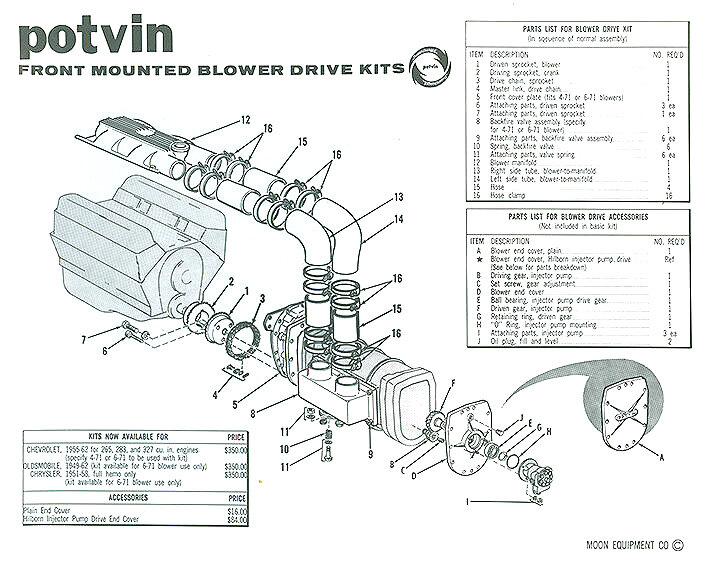
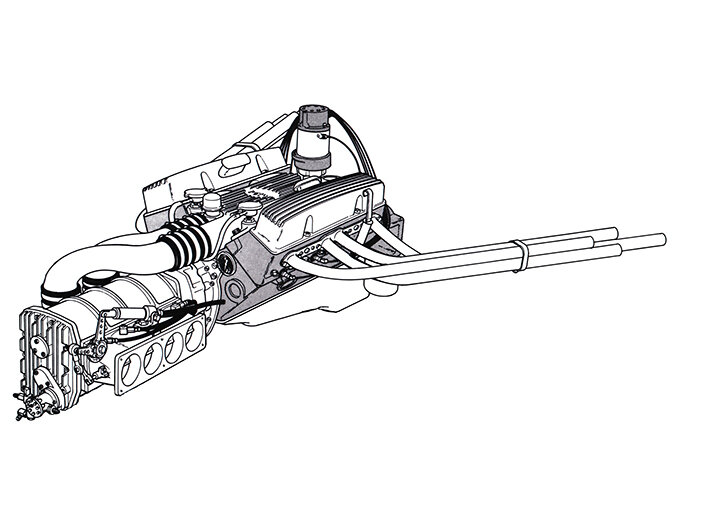
Moon also debuted his Mooneyes ‘Quarter Mile Test Bench’ dragster with a beautiful Potvin-blown, 300 ci small-block Chevy. The bright yellow Dragmaster rail didn’t set the world on fire but it ran high 9s at about 150 mph and helped spread the lure of drag racing around the world with trips to England and Australia. Despite the aforementioned benefits and the fact that Potvin did develop an overdrive adapter that facilitated different blower speeds, the front blower did not catch on. Most people compared the ease of changing blower pulleys as the reason for preferring it on top.
Fast-forward to 2018 and the new ProCharger CrankDrive™ that has a cleverly designed gearbox that resembles a sprint car/hot rod rear axle quick-change. The CrankDrive™ was developed when belt slippage on conventional centrifugal superchargers became a problem. Cog belts and multi-rib serpentine belts helped some but with direct drive there is no chance of slippage and minimal wasted energy.

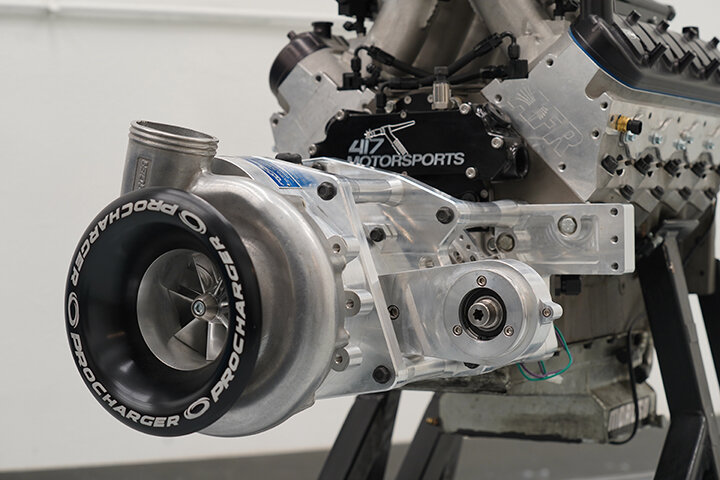
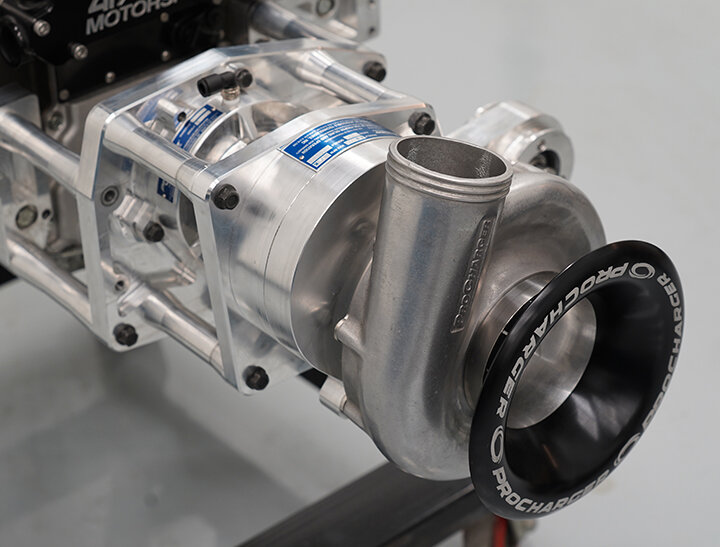
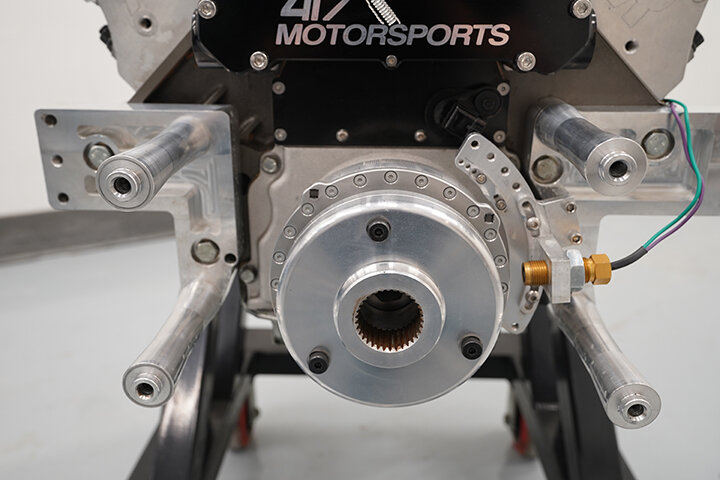
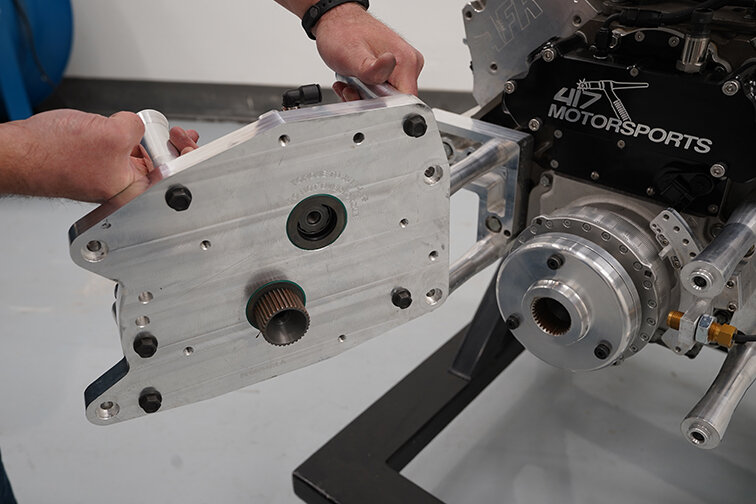
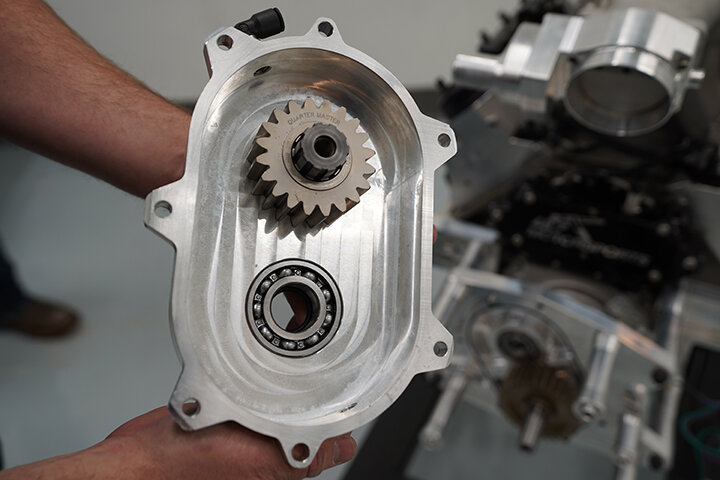
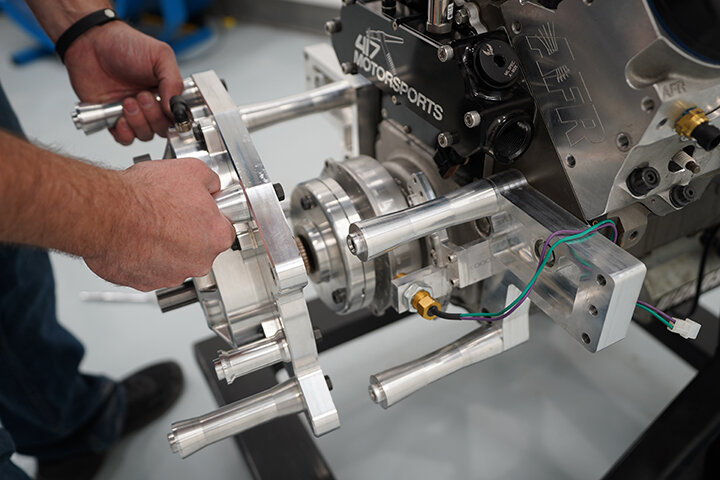
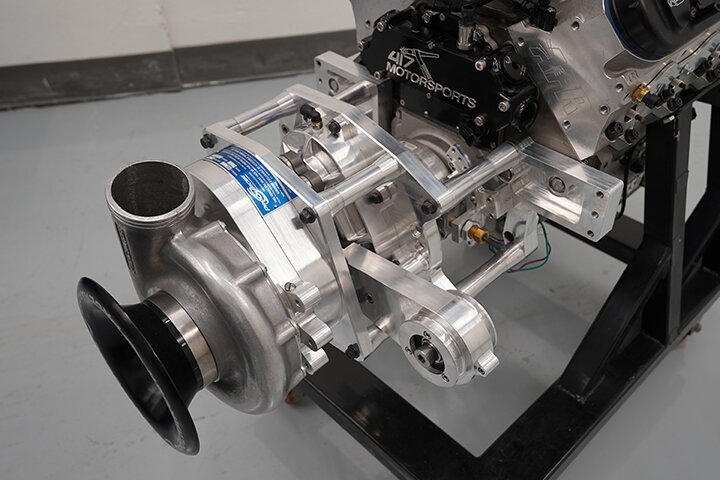
The CrankDrive™ gearbox bolts between the engine and the ProCharger and the two straight-cut input/output gears that are available in different ratios can easily be changed affording different ratios. Though louder then helical-cut gears, the straight-cuts suck less power. Incidentally, the CrankDrive™ will accept any of the ProCharger race superchargers from F-1 to F-3X. If you upgrade your ProCharger you can retain the CrankDrive™ assembly. Gear sets are available in the following ratios: 1.3000, 1.353, 1.400, 1.450, 1.500, 1600, 1688, 1.789:1 and cost $199 per set.
Of course, these CrankDrive™ assemblies require sufficient space in front of the engine consequently they are primarily found in race applications such as Pro Mod cars where there is plenty of room ahead of the engine. However, they can be used on the street and perhaps one of the most famous users of a front-driven blower is the Big Red Camaro. “We made the switch to a crank-driven blower for all of our mile and mile-and-a-half high-speed events including Bonneville.” Said owner/driver RJ Gotllieb.
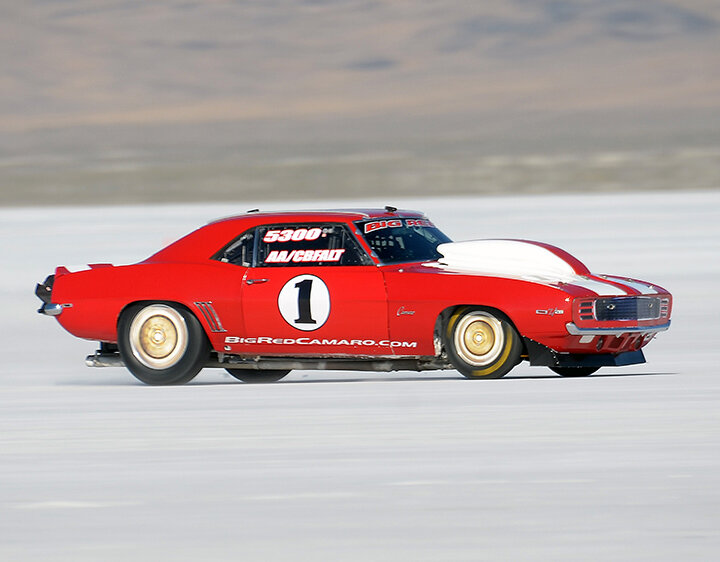
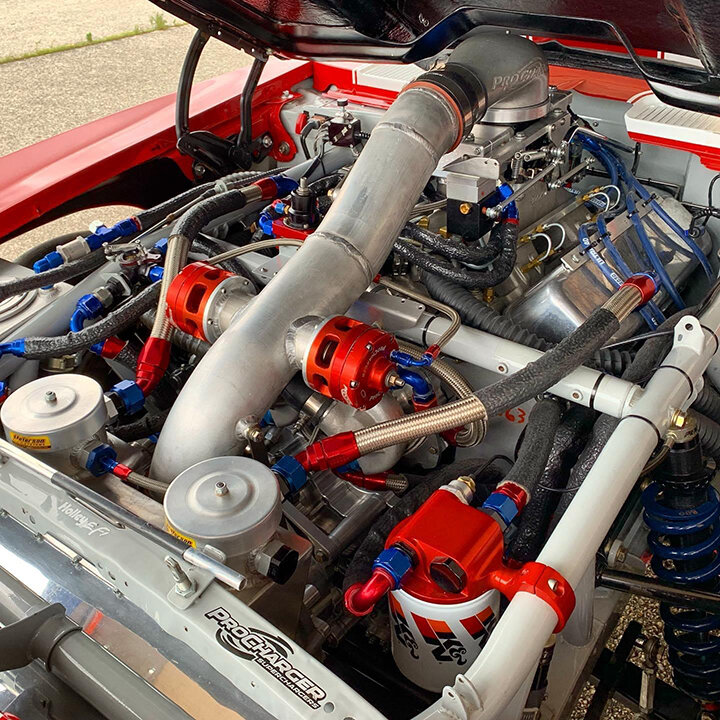
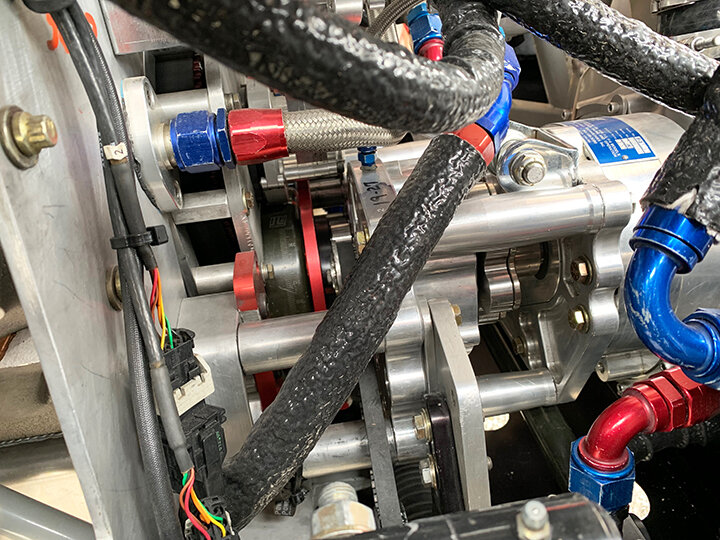
Another proponent of the system is Proline Racing who built an in-house Pro Mod drag car equipped with an F3X-140 ProCharger. Making its competition debut in late 2018, ProLine's 1969 Chevrolet Camaro—the engine builders’ first-ever house car—powered through a host of Pro Modified’s best to a final-round date, where only a boost leak ended the improbable run.
Kevin Rivenbark and Galot Motorsports will forever be remembered as the first radial car to the 50’s, with an amazing 3.587 at 206.67 mph.
Eric Dillard, Proline's Managing Partner, and his team have been at the forefront of ProCharger development in Pro Modified, radial-tire, and Top Dragster/Top Sportsman since 2017, and the decision to build and campaign the shop car was a calculated risk aimed at proving the viability and capability of the combination. Within the first 14 runs during competition, the Proline Camaro became progressively quicker and faster, both to 60- and 660-feet, dipping into the .920s and ultimately, a .913. All told, it went 3.60s in its first four runs, with a best of 3.679. The project was about promoting affordability of racing at the highest levels, and the ProCharger-supercharged setup is that it's more cost-effective and easier to tune than turbochargers or nitrous oxide.
“What this combination allows you to do is take one of our tuners out for a race or two and get comfortable with the fuel injection and get the car ironed out, and then you can go tune it on your own,” he explains. “When you’re dealing with a blown car and how they make power, the way they need to be managed, it’s much easier than a turbo setup. There are fewer variables that come into play, and to really do a turbo combination and do it well, it takes someone that’s been doing it a long time. Tuning-wise, in regards to keeping the engine happy, it’s similar to a turbo, but now you have ‘zoomie’ headers and something hooked to the crankshaft instead of the exhaust; those two factors help control the environment a little better.”
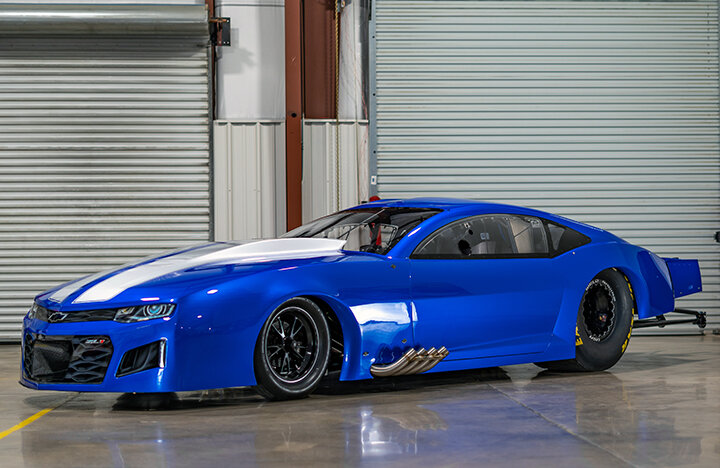
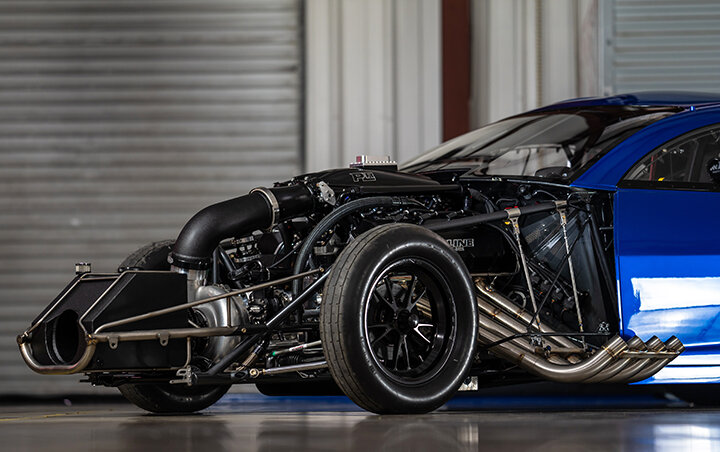

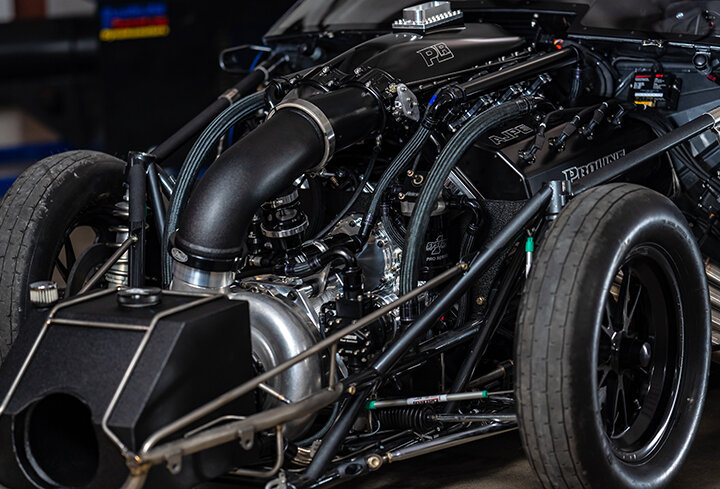
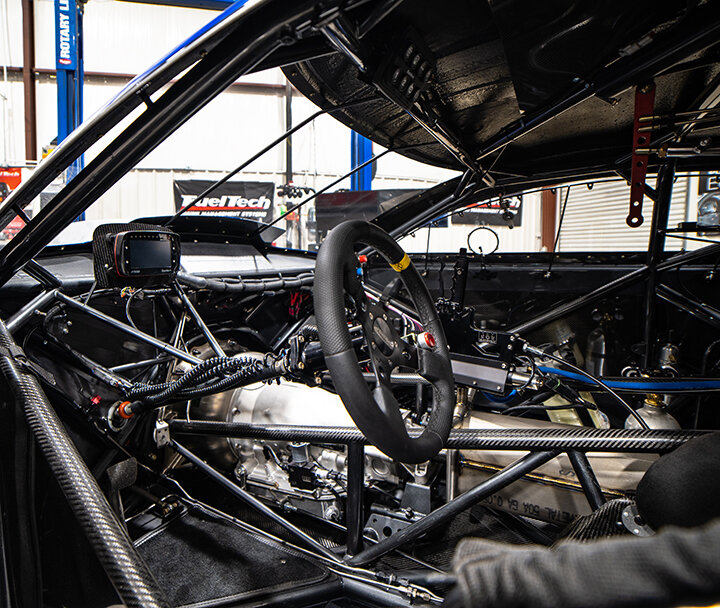
Randy Weatherford’s 2017 Jerry Bickel Camaro is powered by 564 ci, raised-cam Proline Racing Hemi, utilizing an AJPE billet block and a CrankDrive™ F-3X-140 ProCharger. At the PDRA World Finals in October 2019 Randy ran 3.597 at over 209 mph ironically against Kevin Rivenbark and the Galot Motorsports Camaro.
It turns out that Proline Racing's forward-thinking and early R&D in the ProCharger carved out a market for the engine builder and provider of turnkey race packages, on both radial and big tire! The pace was set early in 2019 when Galot Motorsports’ Kevin Rivenbark set the world alight when he ran a world record on radial tires and wrote his name in the history books—the first to run a 3.58 ET over 1/8th mile.
Among many others, author Stephen King said, “Sooner or later, everything old is new again,” and it’s true that many things we think are new were invented more than a century ago including electric cars. The crank-driven supercharger is a good example: it’s not new but ProCharger have made it their own and revolutionized the industry. For more information visit: ProCharger.com or ProLineRacing.net

